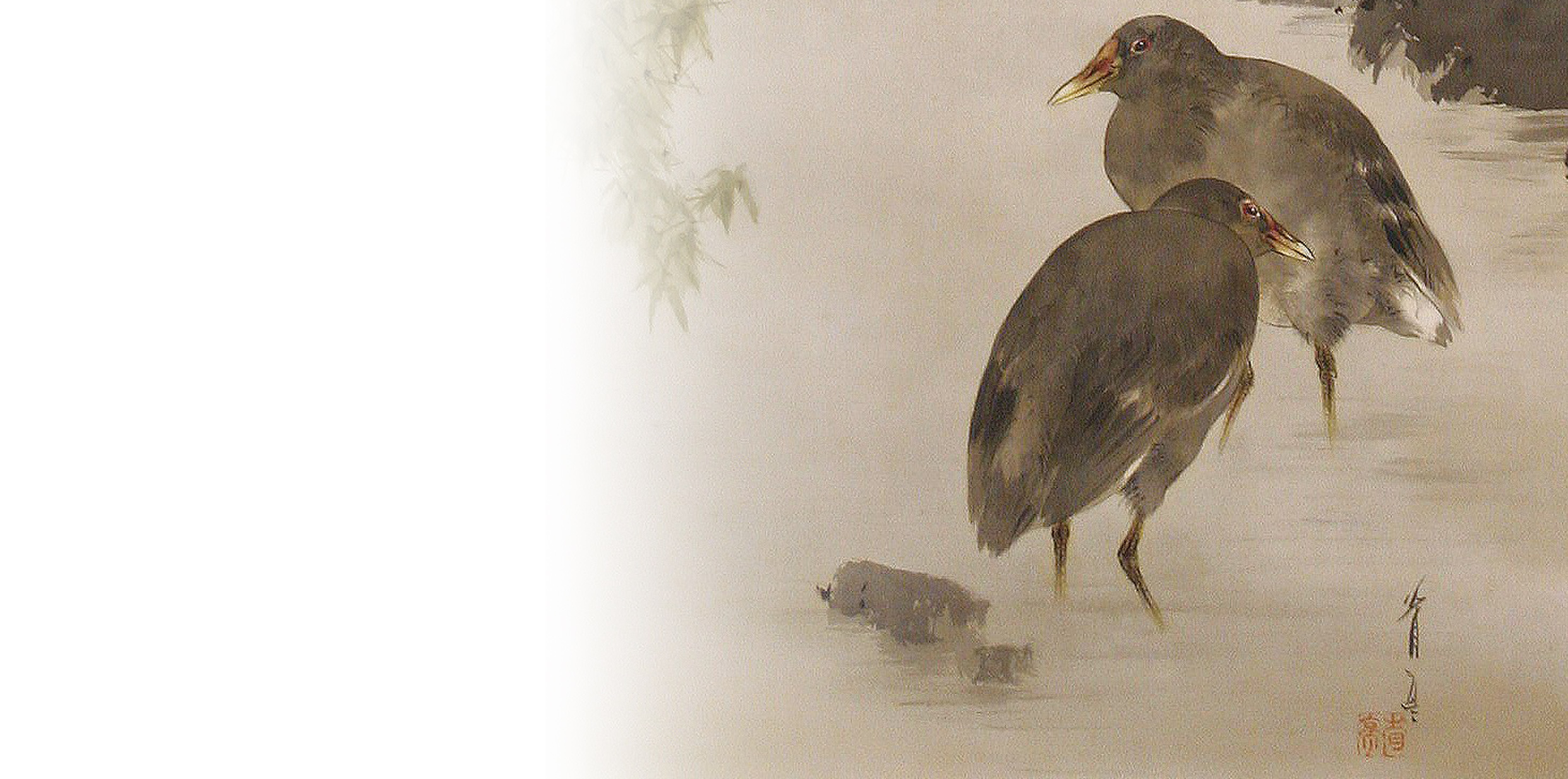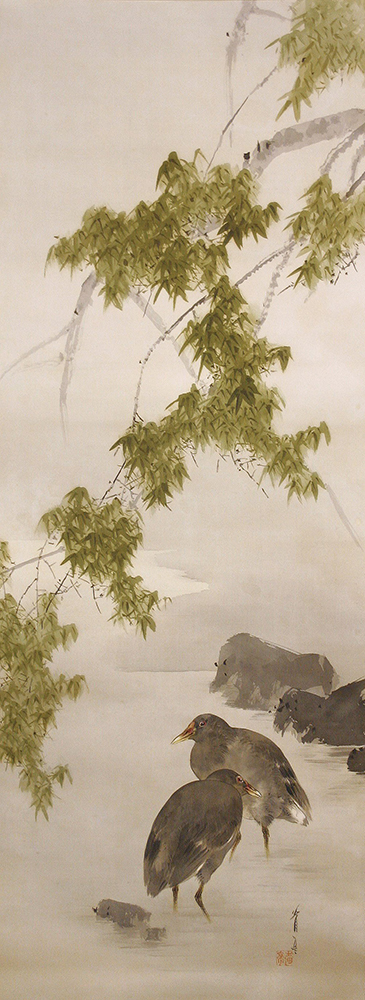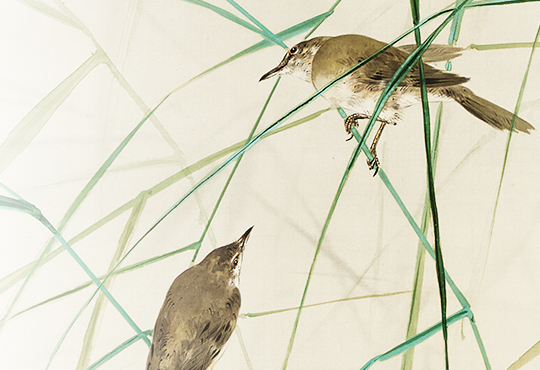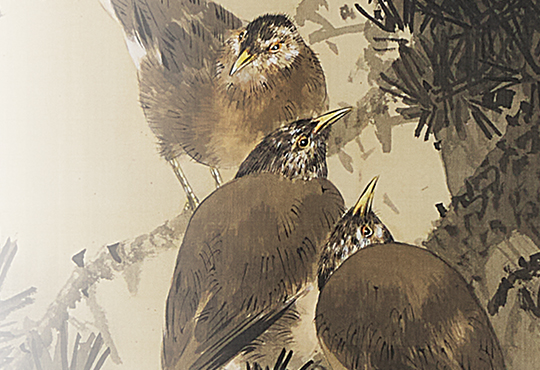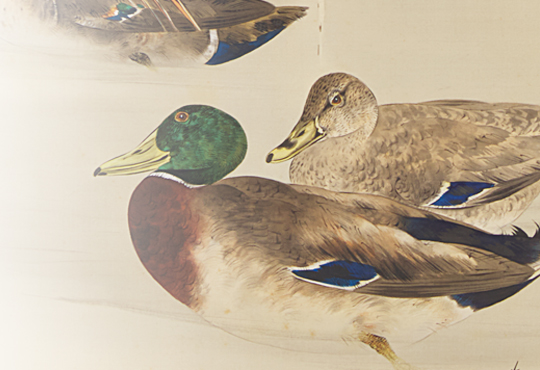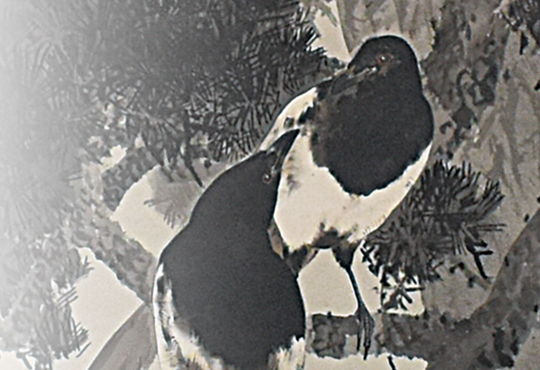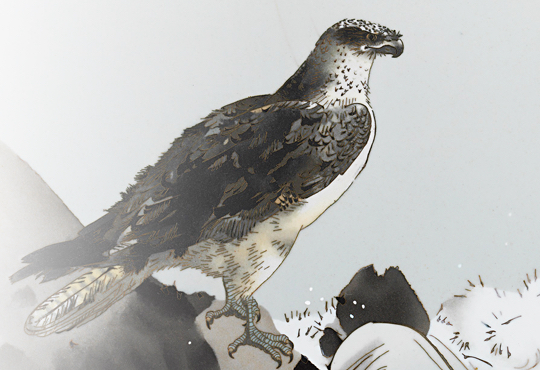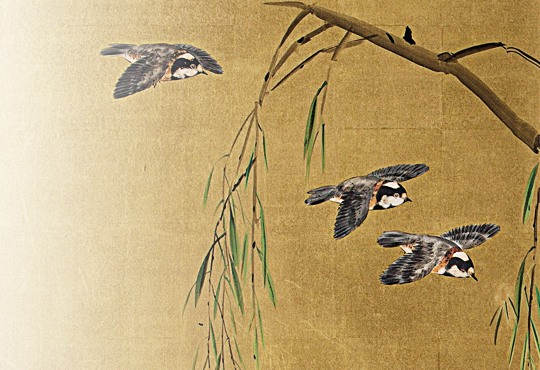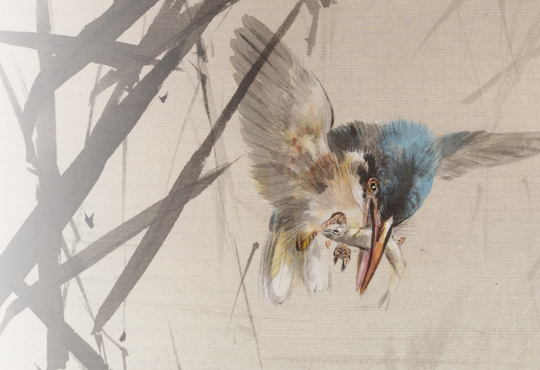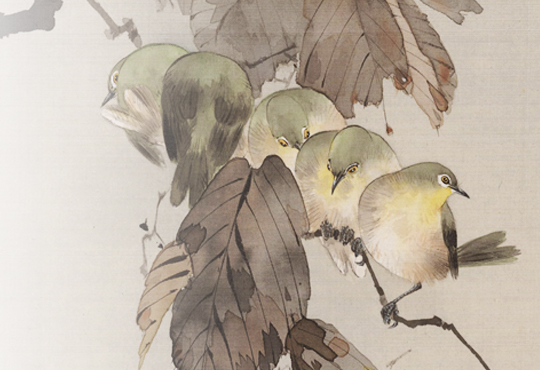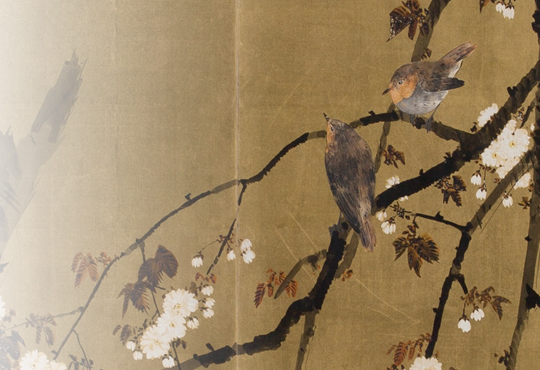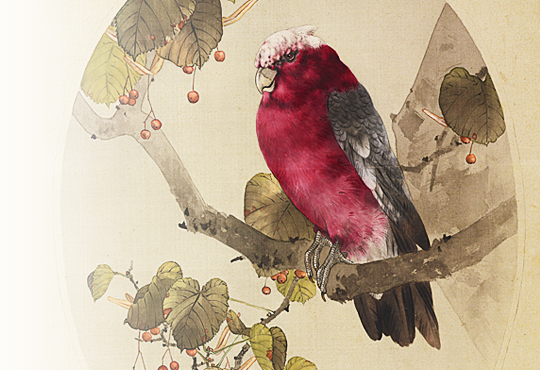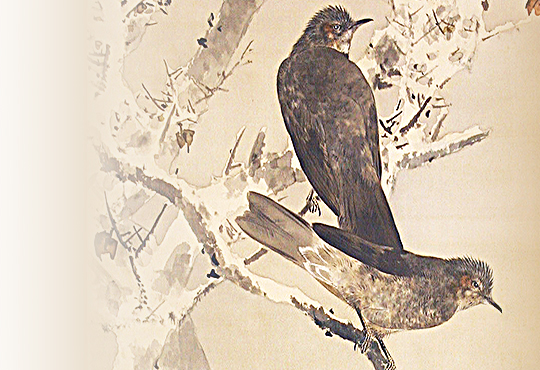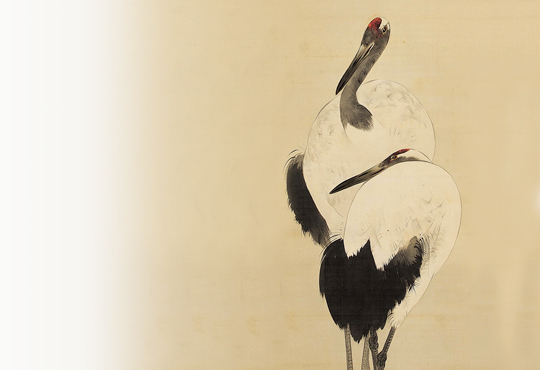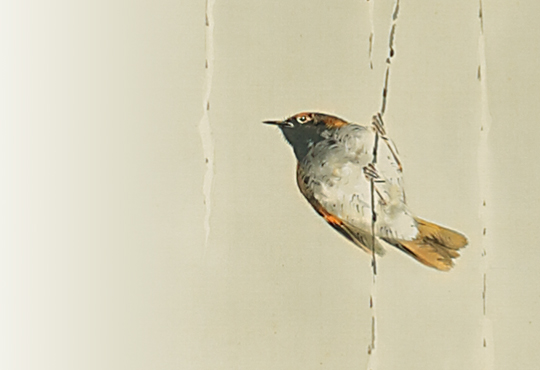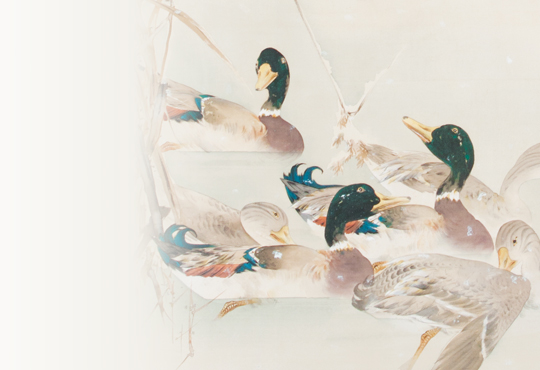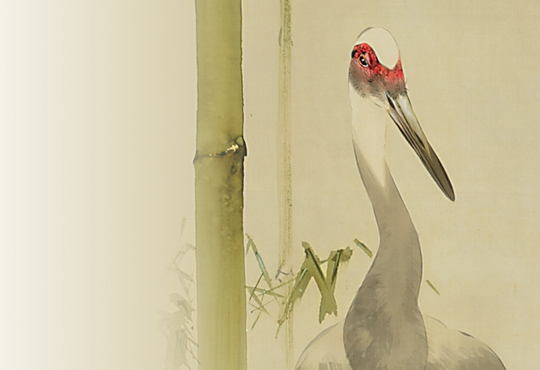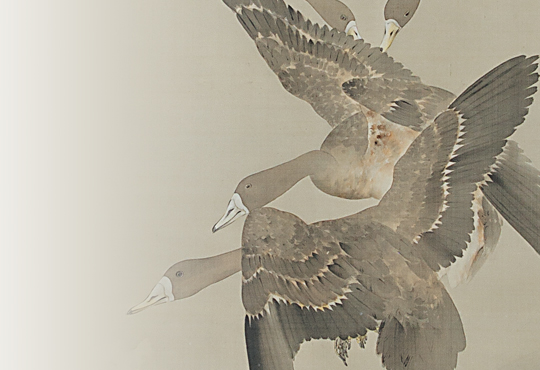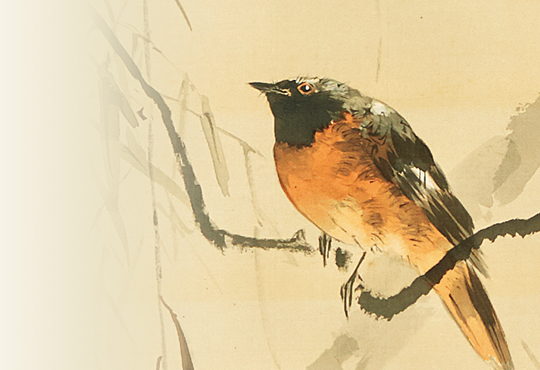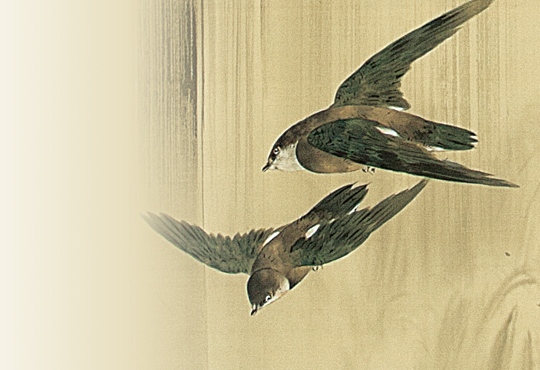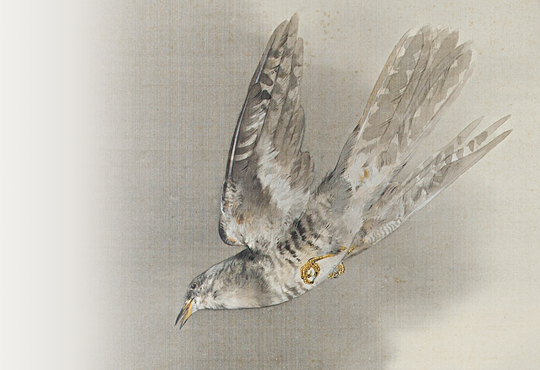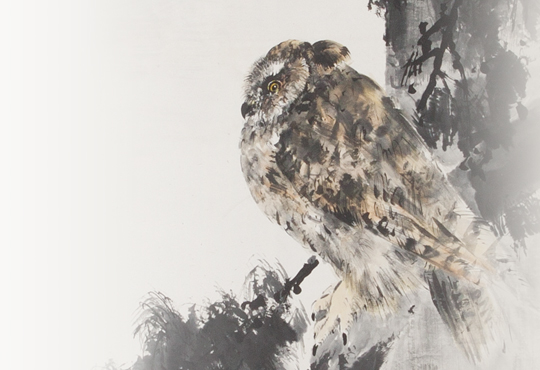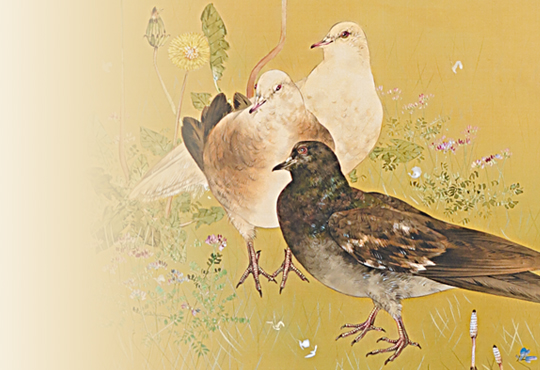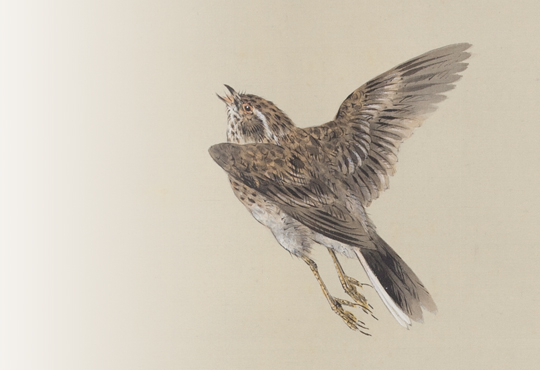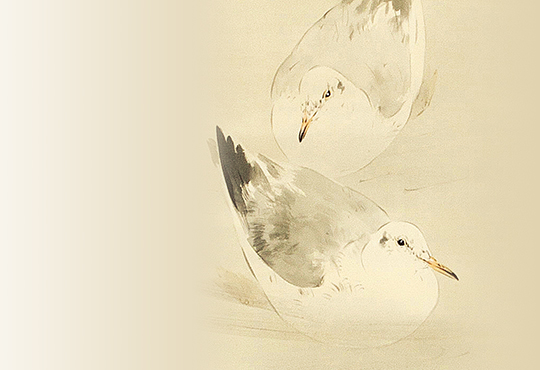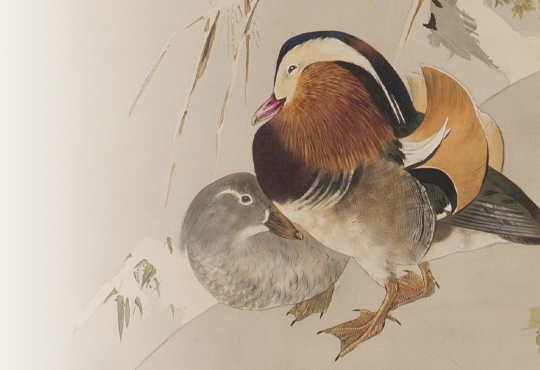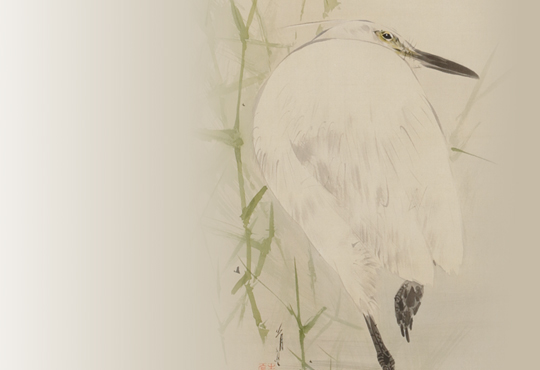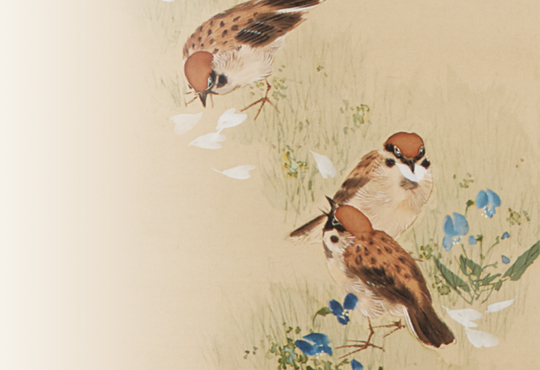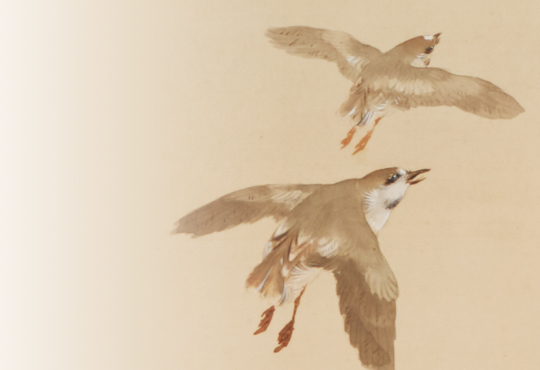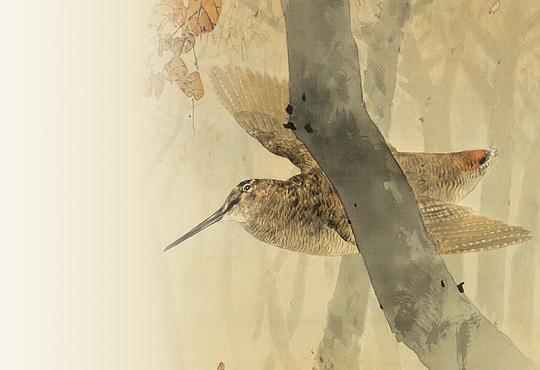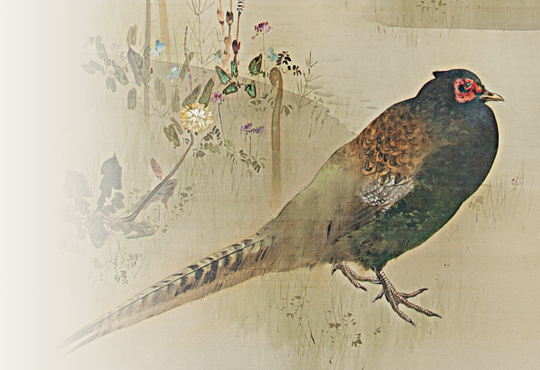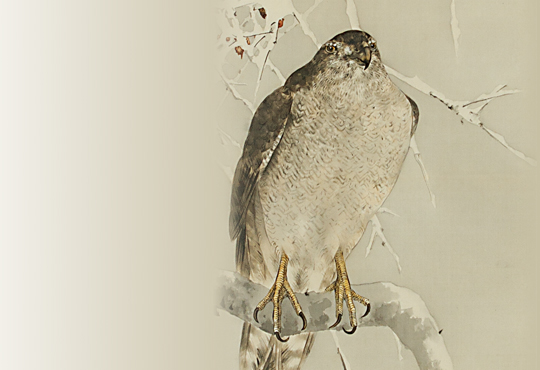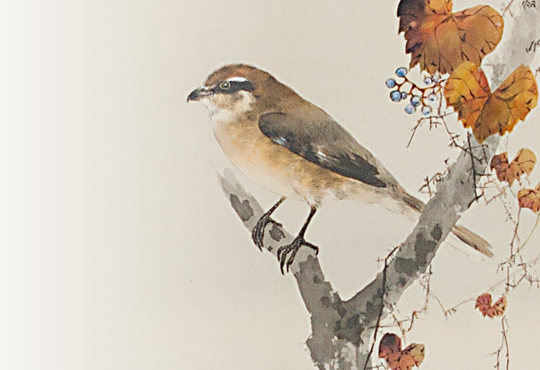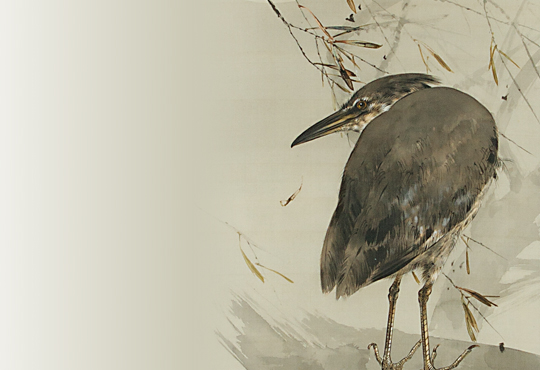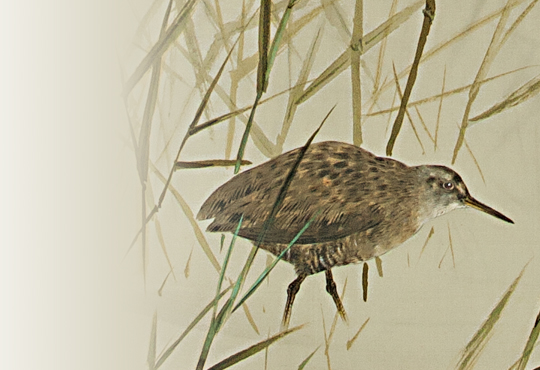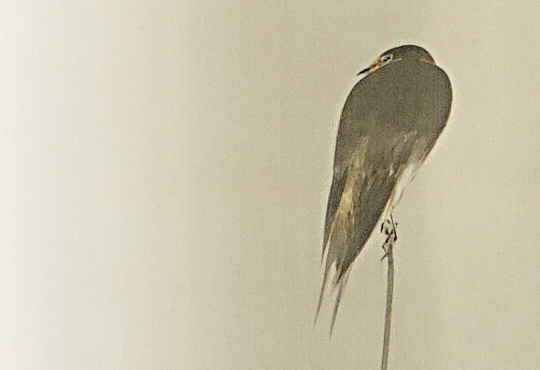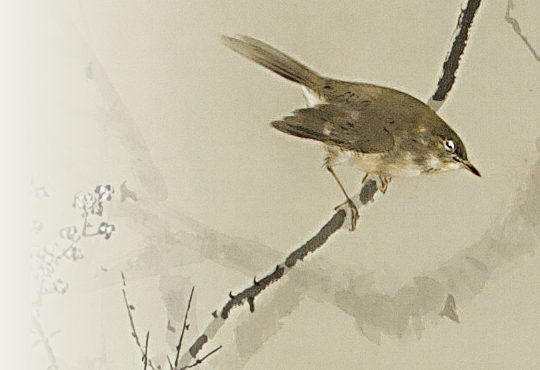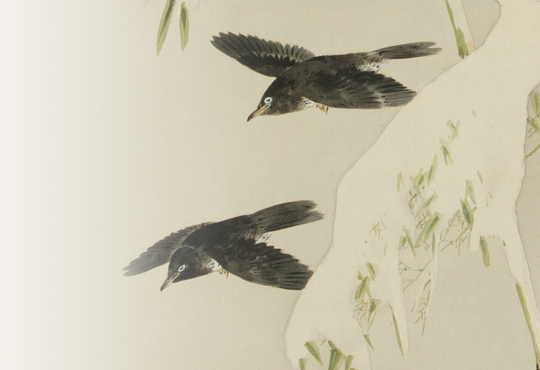Color on silk
108.8 x 40.2cm
Saita Museum, Tokyo
vol.33 The Forgotten Bird and Flower Painter, Ohara Koson: Green Maple with Moorhens
Some call Seitei “the forgotten bird-and-flower painter”. For more than a century since his passing, Japan has mysteriously underplayed Seitei’s talents and completely overlooked the magnificence of his masterpieces. On the other hand, overseas, Seitei’s popularity has remained unchanged, and his works are kept in famous museums. As a Japanese person, I feel disturbed about Japanese society’s malleability and accelerating negligence.
Like Seitei, there is another bird-and-flower painter who was active during the same period and was forgotten soon after his death, only to be re-evaluated in recent years. Ohara Koson (1877-1945) is slightly younger than Seitei and was active from the end of the Meiji to the beginning of the Showa period. He mainly made colorful woodblock prints of realistic bird-and-flower paintings and his works were valued even more so overseas than in Japan. Nevertheless, he was soon forgotten after his death and his paintings were completely forgotten until recently. This pattern of events has a surprising resemblance to that of Seitei’s. Headlined in Chigasaki City Museum of Art’s “Koson Ohara – An Eden of Birds and Flowers” exhibition in September 2018, and Ota Memorial Museum of Art’s “Ohara Koson” exhibition in February 2019, his works have finally, and rightfully, returned to the limelight.
A key feature of Koson’s bird-and-flower paintings is their variety. Generally, he often depicts birds that are common to the genre, such as Little Egrets, Night Herons, Mallards, Tree Sparrows, and the Japanese Crane. However, if you look closely, you’ll notice he also depicts esoteric species, such as the Northern Lapwing, Japanese Waxwing, White-cheeked Starling, and Japanese Wagtail. One bird to note within this diverse lineup is the Two-barred Crossbill, a rare small bird that migrates to Japan in winter. Their bills are asymmetric and thin, which helps them extract pine seeds, and they have two belts around their wings. Males are rose-colored and beautiful. While they are admired by bird lovers for their rarity and beauty, I, unfortunately, am yet to encounter one. Koson’s affinity for birds can be felt through his ability to accurately render the physical qualities of the Two-barred Crossbill. Similarly, this can also be said for Seitei.
Another highlight of his bird-and-flower paintings is their ability to capture “movement”. For instance, “Little Egret on Willow Branch” captures the moment when a Little Egret lands on a branch, while “Japanese White-eye on Persimmon Branch” renders the strength of a Japanese White-eye gripping a persimmon fruit. With “Horned Owl and Sparrows “, a resting Horned Owl is mobbed by a group of Tree Sparrows, while with “Goshawk and Sparrow”, the stillness of a sparrowhawk after a hunt is juxtaposed with the flight of a Tree Sparrow that escapes from its grasp. Like a piece of animation, with each work, you can imagine the series of moments before and after the painted scene.
In this volume, I’d like to focus on a bird both artists have painted, the Moorhen. Moorhens (body length: 32cm) are birds of the rail family and common inhabitants of the wetlands, such as the reed beds and ponds, of Japan. They are slightly shiny black, with dark brown wings, their beak is vibrant red from their forehead and yellow at the tip, and their long legs and toes are a bright yellow. They have white spots on their sides and, most noticeably, on their buttocks. While they are not well found, they are very common birds that you might come across, for instance, silently walking under the large lotuses of Shinobazu Pond, Ueno Park, Tokyo. In Morioka, Iwate, where I live, I’d often encounter Moorhens with their chicks at the ponds of residential parks.
Koson has painted several Moorhens. True to form, you can feel a sense of movement in works like “Moorhen and Dianthus” and “Moorhen and Iris” which depicts them walking in shallow water. Although “Moorhen and Dianthus” incorrectly renders the color of the bird’s legs and pattern of its wings, its ability to capture the very moment when the bird lifts its leg is excellent and, while its right foot is obscured, it, in turn, suggests the muddiness of the water. Perhaps, in search of food, this Moorhen caught its foot in the mud mid-walk. Maybe this bird was thinking, “I saw a water strider before me, but, in this sticky situation, I just couldn’t catch it.” In contrast, in “Gallnules in Shallow Water”, there are two Moorhens standing, but one has its right leg and tail raised, and it seems as if they are just about to begin to walk. When walking, Moorhens’ tails rise and decline, as if they’re trying to show off the white spots on their buttocks. By depicting its tail raised, Koson probably wanted to include this characteristic feature in his work. In each of these works, Koson’s desire to accurately capture the Moorhen’s movements is evident.
Now, how about Seitei? In this work, two Moorhens are standing waterside under a maple tree. The color of each part of their body and their overall proportions are indeed accurate, but they’re both lacking the white spots on their sides. This mistake is very unlike Seitei, but this omission may have been intentional for aesthetic reasons, to maintain color balance. Furthermore, unlike Koson, Seitei’s Moorhens lacks movement. Instead, his birds are completely still and there’s no sense of further movement. In bird-and-flower paintings, plants are responsible for stillness, while birds provide movement, and this balance is fundamental to the genre. Seitei’s birds also control movements, but compared to Koson, the overwhelming stillness of the work is what makes it rather remarkable. If anything, I feel a sense of movement above the birds, through the branches and leaves of the maple tree.
Koson, who strongly resonates with movement, Seitei, who practices restraint; two bird-and-flower painters of differing values, who are now, finally attracting attention. This fateful juxtaposition is what makes art so interesting.
Author : Masao Takahashi Ph.D. (Ornithologist)
Dr. Masao Takahashi was born 1982 in Hachinohe (Aomori prefecture) and graduated from Rikkyo University’s Graduate School of Science. Dr. Takahashi specializes in behavioral ecology and the conservation of birds that inhabit farmlands and wet grasslands. Focusing on the relation between birds and art, he has participated in various museum and gallery talks.
